Paul Chapman
Well-known member
Like many, I twitched the "Scilly Starling" in 1998. Such things are easy in hindsight but whilst I have an understanding of the capacity for Common Starlings to be relatively unmarked, I am not certain exactly on the capacity for Spotless Starlings to be spotty.
We still await the first for Britain or Ireland of what surely is an expected vagrant (from the northern French records and increasing range).
So that was the context for looking at a few starlings in Spain where Common seemed still present regularly in and around Barcelona and where Spotless was the only starling recorded by me inland and around Madrid.
The first is a Common Starling from Barcelona and the next four Spotless Starlings from near Madrid and Valencia but the one that interested me is in the last two photos also from Valencia.
The bird on the right is clearly a male Spotless Starling with very little if any spotting. The bird on the left is clearly a female starling species with a great deal of spotting but also bright bubble gum coloured legs. On the spotting and in particular the crown spotting, I decided that the bird had to be a female Common Starling.
Am I wrong as the leg colour in particular makes me hesitant?
All the best
Paul
We still await the first for Britain or Ireland of what surely is an expected vagrant (from the northern French records and increasing range).
So that was the context for looking at a few starlings in Spain where Common seemed still present regularly in and around Barcelona and where Spotless was the only starling recorded by me inland and around Madrid.
The first is a Common Starling from Barcelona and the next four Spotless Starlings from near Madrid and Valencia but the one that interested me is in the last two photos also from Valencia.
The bird on the right is clearly a male Spotless Starling with very little if any spotting. The bird on the left is clearly a female starling species with a great deal of spotting but also bright bubble gum coloured legs. On the spotting and in particular the crown spotting, I decided that the bird had to be a female Common Starling.
Am I wrong as the leg colour in particular makes me hesitant?
All the best
Paul
Attachments
-
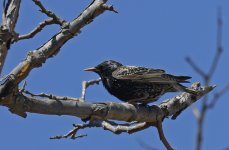 Common Starling.jpg476.5 KB · Views: 58
Common Starling.jpg476.5 KB · Views: 58 -
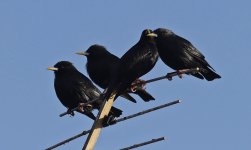 Spotless Starling 002.jpg299.2 KB · Views: 53
Spotless Starling 002.jpg299.2 KB · Views: 53 -
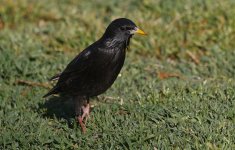 Spotless Starling 003.jpg2 MB · Views: 55
Spotless Starling 003.jpg2 MB · Views: 55 -
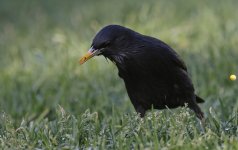 Spotless Starling 005.jpg1.3 MB · Views: 55
Spotless Starling 005.jpg1.3 MB · Views: 55 -
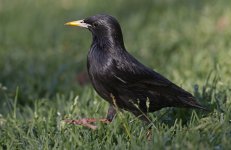 Spotless Starling 004.jpg2.3 MB · Views: 62
Spotless Starling 004.jpg2.3 MB · Views: 62 -
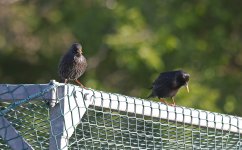 Common Starling 001.jpg1.8 MB · Views: 64
Common Starling 001.jpg1.8 MB · Views: 64 -
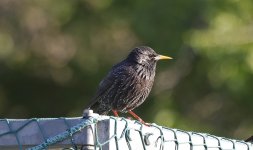 Common Starling 005.jpg543.2 KB · Views: 61
Common Starling 005.jpg543.2 KB · Views: 61
Last edited:




